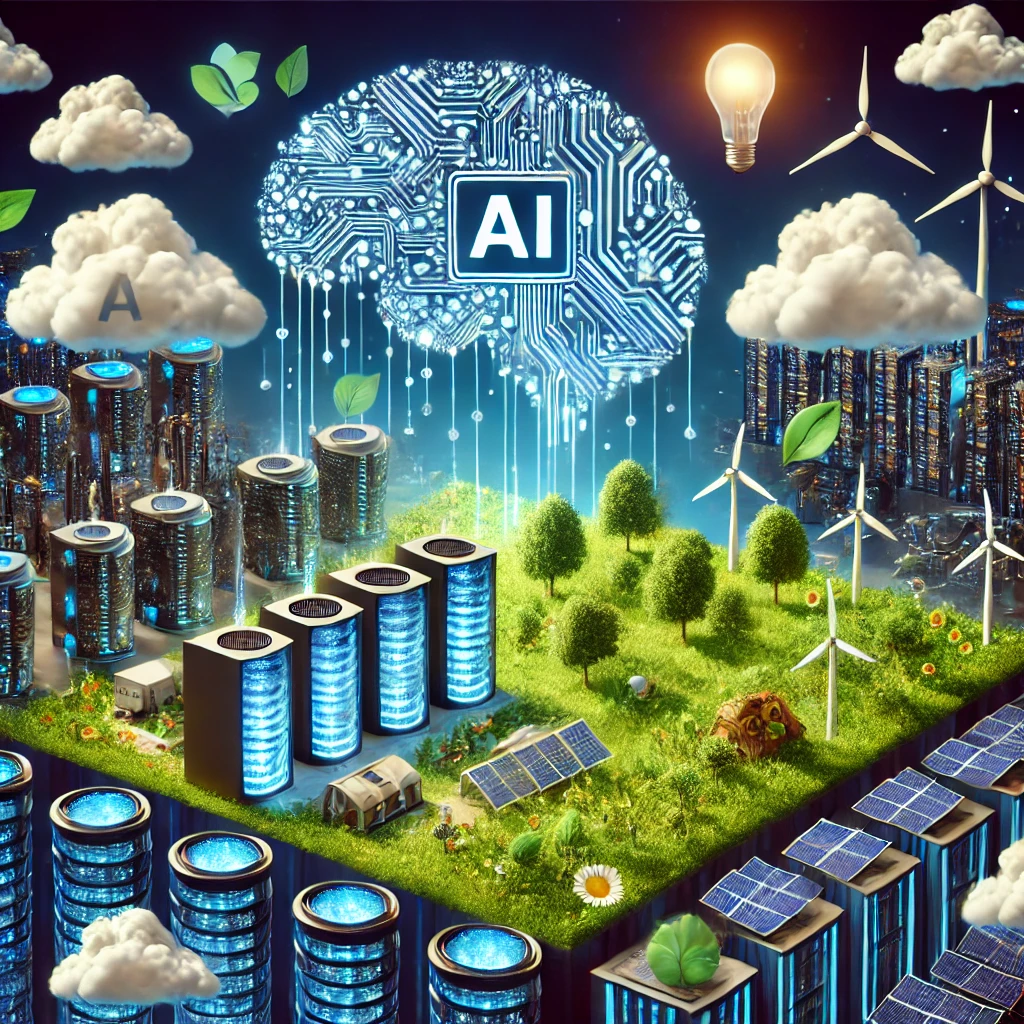Introduction
Artificial Intelligence (AI) is reshaping industries, powering smart assistants, automating tasks, and even helping in medical research. But while AI promises efficiency and progress, it comes with an environmental cost that often goes unnoticed.
Behind every AI-powered tool lies massive computing power, high energy consumption, and resource-intensive infrastructure. From data centers that require constant cooling to the carbon emissions generated by training AI models, the environmental impact of AI is a growing concern.
In this post, we’ll uncover the hidden environmental costs of AI, explore its role in sustainability, and discuss whether AI can become more eco-friendly.
1. AI’s Growing Demand for Energy
AI isn’t just software running on a computer—it requires enormous computational resources. The more advanced the AI, the more energy it consumes.
- AI models, especially deep learning systems, rely on thousands of powerful computers working together.
- Data centers operate 24/7, consuming electricity equivalent to small cities.
- Training a single large AI model can use as much energy as an average household consumes in several years.
As AI continues to advance, its energy demands will only increase. This raises the question: where does all this power come from?
2. The Carbon Footprint of AI
AI’s reliance on energy means it contributes to carbon emissions, especially in regions where electricity is still generated from fossil fuels.
- Training large AI models can emit as much carbon dioxide as five gasoline-powered cars over their lifetime.
- The global network of data centers contributes to approximately 1% of worldwide electricity consumption and is responsible for 2% of total greenhouse gas emissions—a figure comparable to the airline industry.
- AI’s growing role in automation and cloud computing means more demand for energy-intensive hardware, further increasing its environmental impact.
If AI is to be a part of a sustainable future, reducing its carbon footprint is essential.

3. Water and Resource Consumption in AI
Beyond electricity, AI’s impact extends to water usage and raw material extraction.
- Water usage in cooling systems: Data centers generate extreme heat and require millions of gallons of water daily for cooling.
- Mining for AI hardware: AI systems rely on high-performance processors that require rare minerals like lithium, cobalt, and silicon. Extracting these resources contributes to deforestation, pollution, and environmental degradation.
As AI continues to expand, balancing resource consumpt4. Can AI Help Solve Environmental Problems?
Despite its environmental impact, AI also plays a role in tackling climate change and promoting sustainability. Here’s how AI is helping the planet:
- Energy optimization: AI-driven systems improve power grid efficiency, reducing energy waste.
- Climate prediction: AI models analyze climate patterns to predict extreme weather events, helping communities prepare.
- Wildlife conservation: AI-powered drones and cameras monitor endangered species and detect illegal poaching.
- Reducing industrial emissions: AI is used to optimize logistics, reduce waste, and improve sustainable business practices.
While AI contributes to environmental issues, it also offers tools to mitigate them. The challenge is ensuring that its benefits outweigh its costs.
5. The Future: Making AI More Sustainable
To minimize AI’s environmental impact, tech companies, researchers, and policymakers are working on more sustainable solutions:
- Eco-friendly data centers: Tech giants like Google, Microsoft, and Amazon are investing in renewable energy sources to power their AI infrastructure.
- Energy-efficient AI models: Researchers are developing lightweight AI systems that require less computational power.
- Regulations and policies: Governments are exploring policies to ensure AI development aligns with sustainability goals.
While these efforts are promising, making AI sustainable requires collective action—from developers designing energy-efficient algorithms to businesses prioritizing green technology.
Conclusion
AI is a double-edged sword. On one hand, it’s driving innovation and solving complex problems; on the other, it demands vast amounts of energy, contributes to carbon emissions, and consumes natural resources.
Why Indigo Blue Chip is the Smart Choice for Savvy Investors – Bittu Naidu

